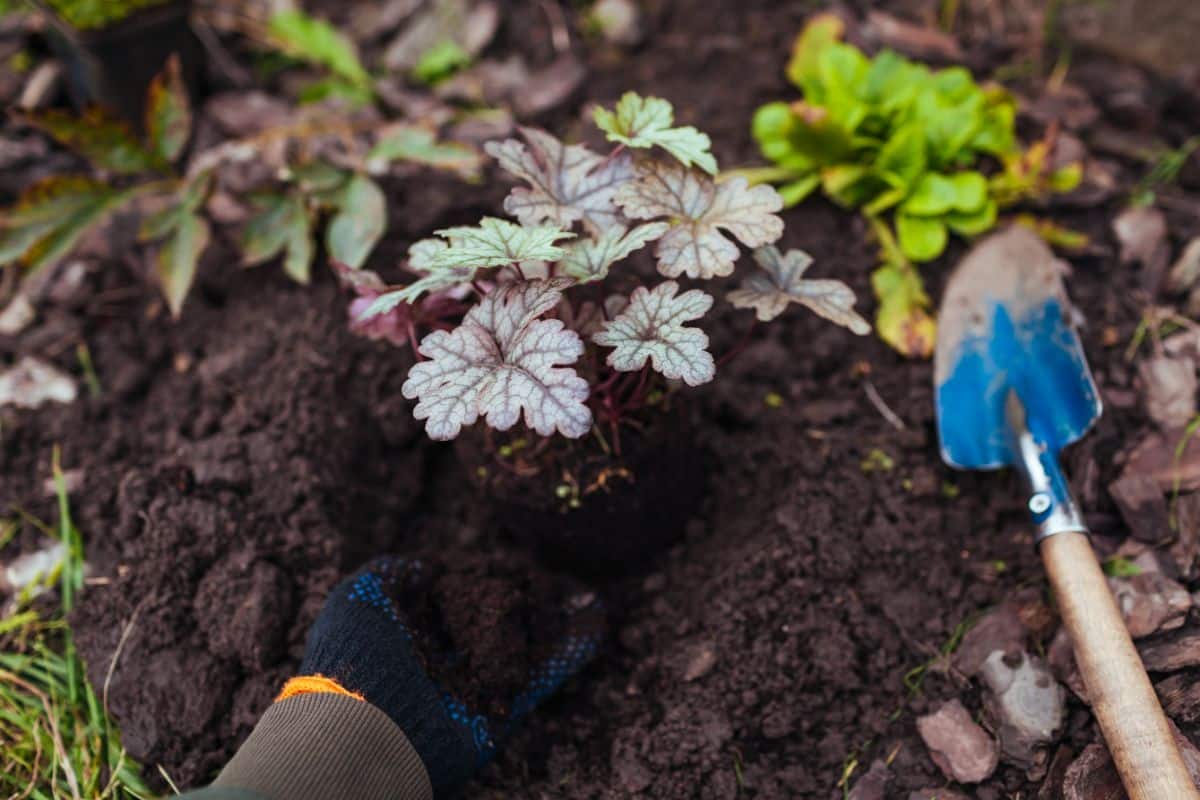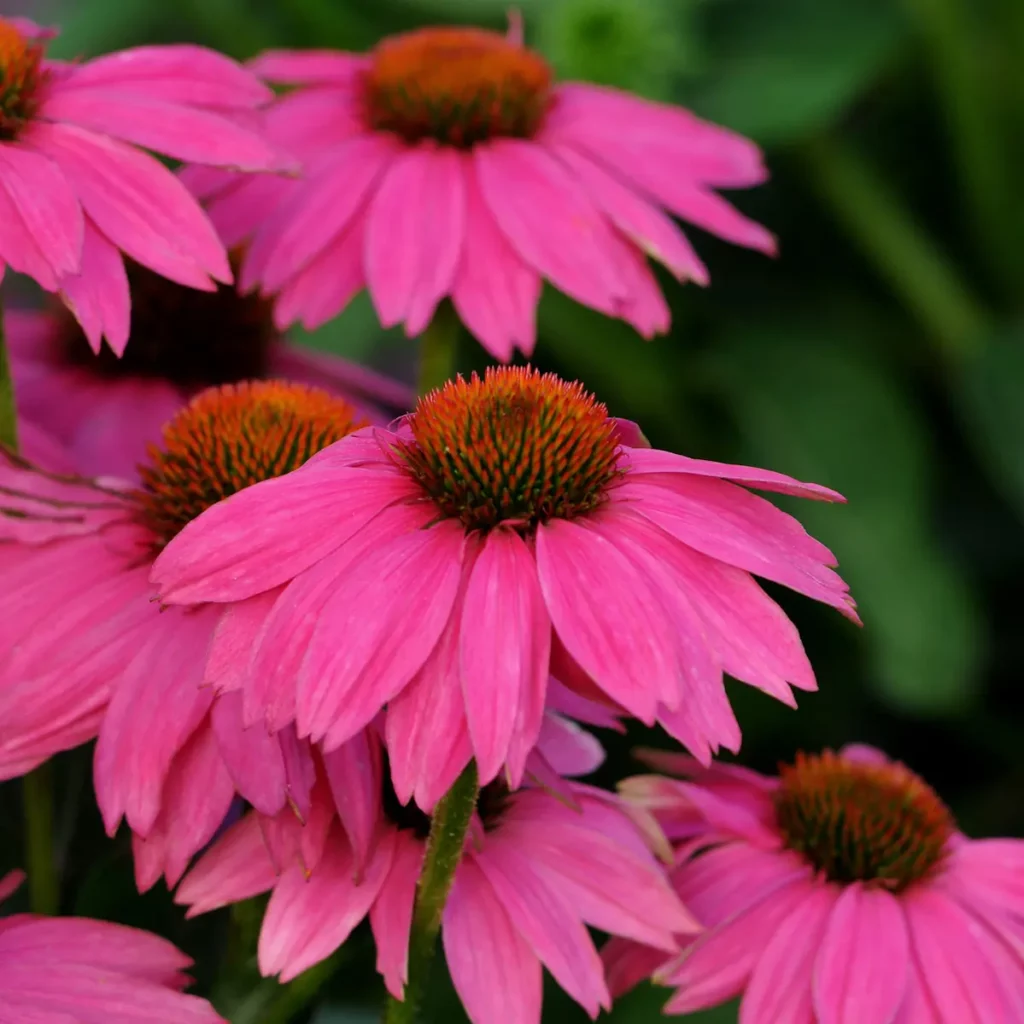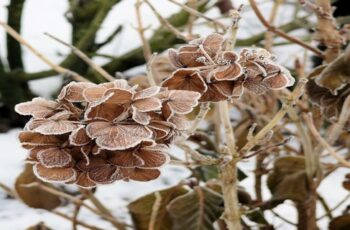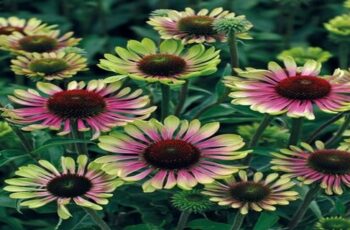Ad Blocker Detected
Our website is made possible by displaying online advertisements to our visitors. Please consider supporting us by disabling your ad blocker.
With cooler weather coming and plants slowing down for the year, autumn is the perfect time to get ahead of your gardening tasks and do some garden planning. Did some of your flower beds look a bit sparse during the growing season, or are you considering adding new plants to your garden to expand existing beds and incorporate more perennials?
If so, there are a number of stunning perennial plants and flowers that you can add to your garden in fall to improve the look of your space and fill out your beds too.

In this guide, you’ll find some of the most lovely perennials to plant in fall for spring and summer flowers. Getting these perennials in the garden before autumn frosts arrive will ensure these plants have plenty of time to adjust to your garden and set out roots before winter.
18 colorful perennials to plant in fall
Perennial plants are generally sold as bulbs, bare roots, or potted plants. All three plant varieties work well with fall planting, but you’ll want to time your planting right to make sure your new perennials have time to grow in your garden. Amending your soil with a bit of compost and watering your perennials well after planting will speed up the acclimation process and help new perennials thrive.
1. Coneflowers (Echinacea purpurea)

| Plant name: | Coneflowers |
| Light requirements: | Full sun to part shade |
| Water requirements: | Moderate |
| Growing zone: | Zones 3 to 9 |
A staple plant in pollinator habitats and cottage gardens, too, coneflowers are hardy plants that are native to North America. Most people are familiar with purple coneflower, which has lavender-hued petals, but you can also find coneflowers with pink, orange, red, and yellow blooms. Among their many benefits, coneflowers can thrive in a range of soil types, and they produce large seed heads in autumn, which is always a treat for wild birds.
Coneflowers can be planted in either spring or fall, but for autumn plantings, you’ll want to get your coneflowers in the ground at least 4 to 6 weeks before frost is expected. This will give your plants plenty of time to acclimate and start growing roots before the cold weather hits. Established coneflowers can grow up to 3’ tall, they are generally quite drought resistant, and they can get by with minimal water.
2. Coral bells (Heuchera americana)
| Plant name: | Coral bells |
| Light requirements: | Part shade |
| Water requirements: | Moderate |
| Growing zone: | Zones 4 to 9 |
Also known as alumroot, coral bells are native to North America, and while these plants flower, they are mostly kept for their colorful leaves. Coral bell plants come in almost any color you could want, including purple, amber, gold, and chartreuse green. These plants are also adaptable enough to grow in shade gardens, although they can also handle full sun as long as they get enough water.
Like many other perennials, coral bells can be planted in spring or in late autumn before the ground freezes solid. These low-growing plants make a colorful border around flower gardens, but they can also be used as a groundcover or accent plant. When mature, coral bells grow to about 16” tall, and they bloom from late spring to mid-summer.
3. Russian sage (Perovskia atriplicifolia)
| Plant name: | Russian sage |
| Light requirements: | Full sun |
| Water requirements: | Moderate to low |
| Growing zone: | Zones 4 to 9 |
Russian sage is a top pollinator plant that’s much beloved by bees, hummingbirds, and butterflies. But while Russian sage can be useful in habitat gardens, it also looks right at home in ornamental beds where it forms a stunning and colorful backdrop to lower-growing perennials and annuals. Full-grown Russian sage plants can grow between 3 to 5’ tall, and their silver leaves and airy grown habit give these plants an ethereal and dreamy quality in flower beds.
Despite its name, Russian sage is not a true sage, but it does have richly fragranced leaves that can add even more charm to your outdoor space. When crushed, Russian sage leaves have a deep, menthol fragrance with notes of lavender. Russian sage plants can be planted in spring or in fall, up to 4 weeks before your first frost date.
4. Hellebores (Helleborus spp.)
| Plant name: | Hellebores |
| Light requirements: | Full sun to shade |
| Water requirements: | Moderate |
| Growing zone: | Zones 3 to 9 |
If you’re dreading the winter season ahead, plant some hellebores! Hellebores are some of the first plants to bloom in spring, and they can often be spotted poking up right through the snow. These plants typically bloom around Eastertime, which is how they earned their nickname, “Lenten roses.”
A close relative of buttercups, wolfsbane, and delphinium, hellebores are famed for their cup-shaped flowers, which come in unusual shades, including green, pale pink, purple, and near black. These plants are also cold hardy, and they can grow in shady areas in summer, although they prefer garden locations that receive sun in winter. Plant hellebores towards the end of the season — anytime from September to when the ground freezes.
5. Bleeding hearts (Dicentra spp.)
| Plant name: | Bleeding hearts |
| Light requirements: | Part shade |
| Water requirements: | Moderate |
| Growing zone: | Zones 3 to 9 |
Bleeding hearts are springtime bloomers that are prized for their curious, heart-shaped flowers that dangle from the undersides of slender, arching stems. Most often, bleeding heart flowers come in a vivid pink color, but you can also find white, purple, yellow, or red bleeding heart cultivars. One of the best things about bleeding hearts is that these plants can thrive in shady areas, and they make a showy addition to shade gardens and forested landscapes.
Bleeding hearts can be grown from nursery-started plants, but you can also grow these plants from bare roots, which tends to be more budget-friendly. The best time to plant bleeding hearts is in spring or fall when the temperatures are mild. Working organic matter, like compost, into your soil before planting will give your bleeding hearts an advantage and help them settle in more readily.
6. Wolfsbane (Aconitum napellus)
| Plant name: | Wolfsbane |
| Light requirements: | Full sun to part shade |
| Water requirements: | Moderate |
| Growing zone: | Zones 3 to 8 |
Also known as monkshood, wolfsbane is a striking plant with palmate leaves and modified flower structures that come in shades of blue, purple, pink, and white. These plants earned their nickname “monkshood” due to their uniquely formed flowers, which are said to resemble the cowl of a monk’s habit. Like bleeding hearts, wolfsbane can tolerate shady spots, but it will also grow well in full sun as long as it is watered regularly.
One important thing to note about wolfsbane is that it is a very toxic plant, and it’s advised to wear gloves when handling it. If you have small children or curious pets, it’s wise to avoid this plant entirely. Wolfsbane can be grown either from nursery starts or seed, but you’ll want to sow these plants in the fall so they have enough time to grow and flower by midsummer.
7. Columbine (Aquilegia spp.)
| Plant name: | Columbine |
| Light requirements: | Full sun to part shade |
| Water requirements: | Moderate |
| Growing zone: | Zones 3 to 9 |
A short-lived perennial, columbines boast charming, nodding blooms that come in shades of purple, red, white, and other colors too. Another shade-loving plant, columbines are naturally found in semi-wooded areas and forest margins, but they’ll do well in flower gardens too. While these plants only live around 3 to 5 years, columbines are very good at self-sowing as long as you don’t deadhead the old blooms.
The best time to plant columbines is either in early spring or fall before the ground freezes. Give your columbines a boost by amending the soil with compost or aged manure before planting. For a showier display, plant several columbines together or combine columbines with other shade lovers, like hellebores and bleeding hearts.
8. Creeping phlox (Phlox subulata)
| Plant name: | Creeping Phlox |
| Light requirements: | Full sun to part shade |
| Water requirements: | Moderate |
| Growing zone: | Zones 3 to 9 |
Creeping phlox is a spring-blooming flower that can form colorful carpets of white and pink flowers over garden beds and hillsides. In fact, you can use creeping phlox as a low-maintenance groundcover or to conceal low retaining walls; however, creeping phlox also looks stately in ornamental beds. Interestingly, the pink moon of April is named after this plant as creeping phlox begins to bloom in mid-spring.
While creeping phlox can be planted in spring, you’ll get more flowers if you plant your creeping phlox in fall. Mature plants only grow to about 6” tall, but they spread quickly, and a single plant can stretch over 2’ wide. If you want to create a dense display of creeping phlox plants, space individual plants about 15 to 18” apart in a mass planting.
9. Yarrow (Achillea millefolium)
| Plant name: | Yarrow |
| Light requirements: | Full sun to part shade |
| Water requirements: | Moderate to low |
| Growing zone: | Zones 3 to 9 |
A top pollinator plant, yarrow is one of the most easygoing perennials you can grow. Whether you have sandy or clay-heavy soil, yarrow should grow just fine, and yarrow can even handle part shade! Most often, you’ll find yarrows with white blooms, but if you look around, you can usually find yarrows in shades of pink and yellow too.
Yarrow plants are usually sown in early spring or early fall, but you’ll get earlier blooms if you go with fall planting. These plants are long-season bloomers, and you can enjoy yarrow flowers from spring through autumn. While yarrow will add elegance and a touch of charm to garden beds, yarrow also makes a fantastic cut flower and the blooms dry beautifully for preserved displays as well.
10. Virginia bluebells (Mertensia virginica)
| Plant name: | Virginia bluebells |
| Light requirements: | Shade |
| Water requirements: | Moderate |
| Growing zone: | Zones 3 to 9 |
Virginia bluebells are what’s known as a “spring ephemeral,” which means they bloom early in the season, and then the plant goes dormant when temperatures rise. When in bloom, Virginia bluebells will liven up your garden with their color-changing, bell-shaped flowers that begin as pink buds and mature into periwinkle blue flowers. Since bluebells fade by summer, these plants work particularly well when they’re interplanted with summertime bloomers, like hostas and astilbe.
Virginia bluebells can be grown from nursery stock, or you can order bare roots of these plants online. Bare roots are usually less expensive, and they are just as easy to grow. Plant Virginia bluebells in rich soil in early fall if you want to get flowers the following year.

